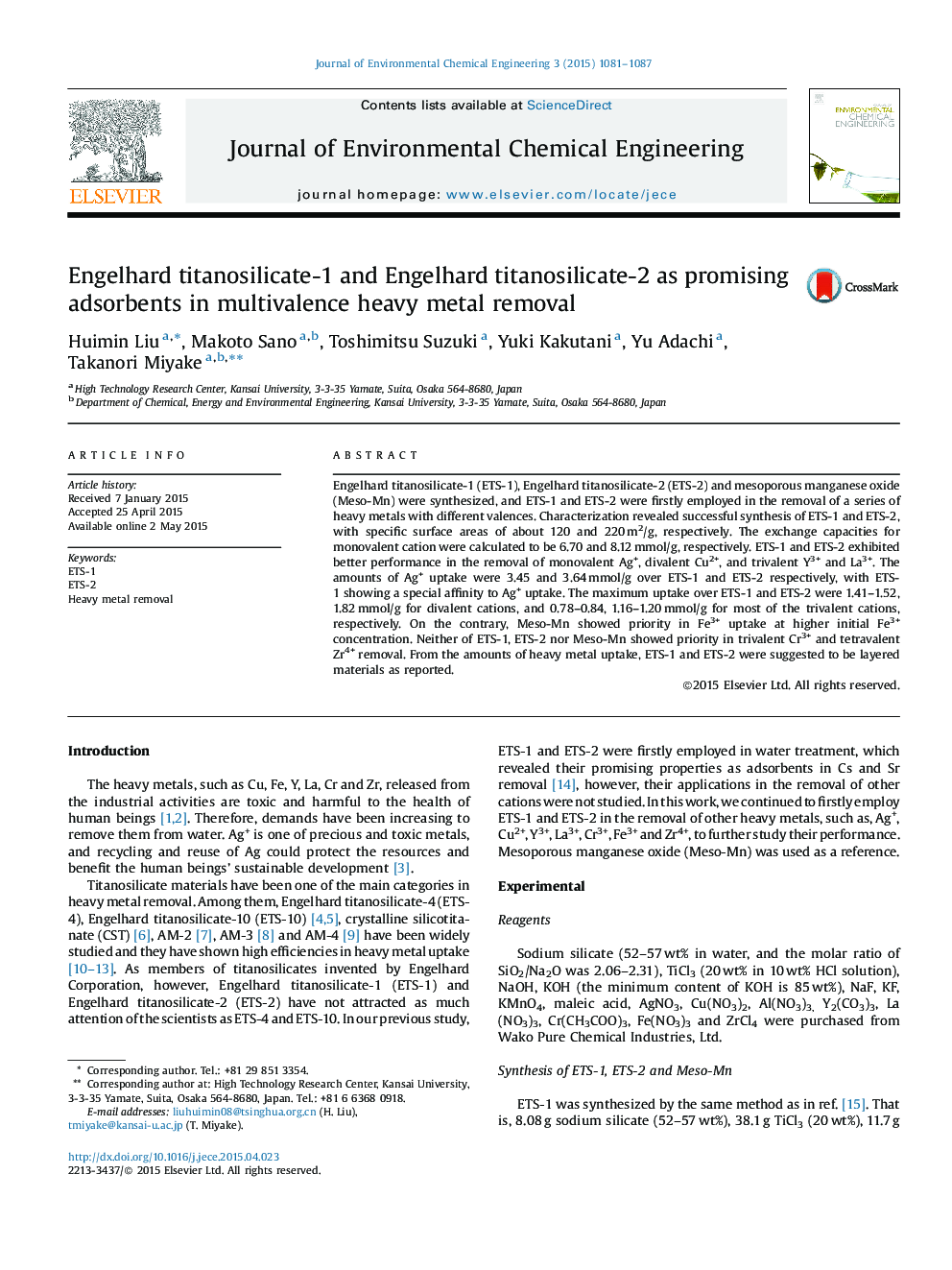| Article ID | Journal | Published Year | Pages | File Type |
|---|---|---|---|---|
| 222335 | Journal of Environmental Chemical Engineering | 2015 | 7 Pages |
•ETS-1 and ETS-2 were effective in the removal of mono-, di- and tri-valence cation.•Existing states of tetra-, penta-valence cation were accounted for their low removal performance.•ETS-1 showed a special affinity in Ag+ uptake.
Engelhard titanosilicate-1 (ETS-1), Engelhard titanosilicate-2 (ETS-2) and mesoporous manganese oxide (Meso-Mn) were synthesized, and ETS-1 and ETS-2 were firstly employed in the removal of a series of heavy metals with different valences. Characterization revealed successful synthesis of ETS-1 and ETS-2, with specific surface areas of about 120 and 220 m2/g, respectively. The exchange capacities for monovalent cation were calculated to be 6.70 and 8.12 mmol/g, respectively. ETS-1 and ETS-2 exhibited better performance in the removal of monovalent Ag+, divalent Cu2+, and trivalent Y3+ and La3+. The amounts of Ag+ uptake were 3.45 and 3.64 mmol/g over ETS-1 and ETS-2 respectively, with ETS-1 showing a special affinity to Ag+ uptake. The maximum uptake over ETS-1 and ETS-2 were 1.41–1.52, 1.82 mmol/g for divalent cations, and 0.78–0.84, 1.16–1.20 mmol/g for most of the trivalent cations, respectively. On the contrary, Meso-Mn showed priority in Fe3+ uptake at higher initial Fe3+ concentration. Neither of ETS-1, ETS-2 nor Meso-Mn showed priority in trivalent Cr3+ and tetravalent Zr4+ removal. From the amounts of heavy metal uptake, ETS-1 and ETS-2 were suggested to be layered materials as reported.
Graphical abstractFigure optionsDownload full-size imageDownload as PowerPoint slide
